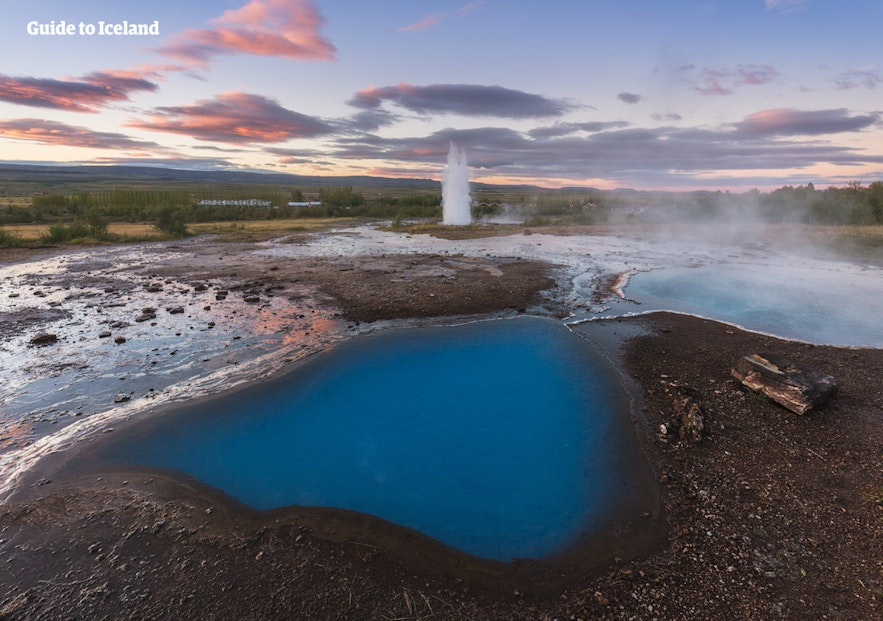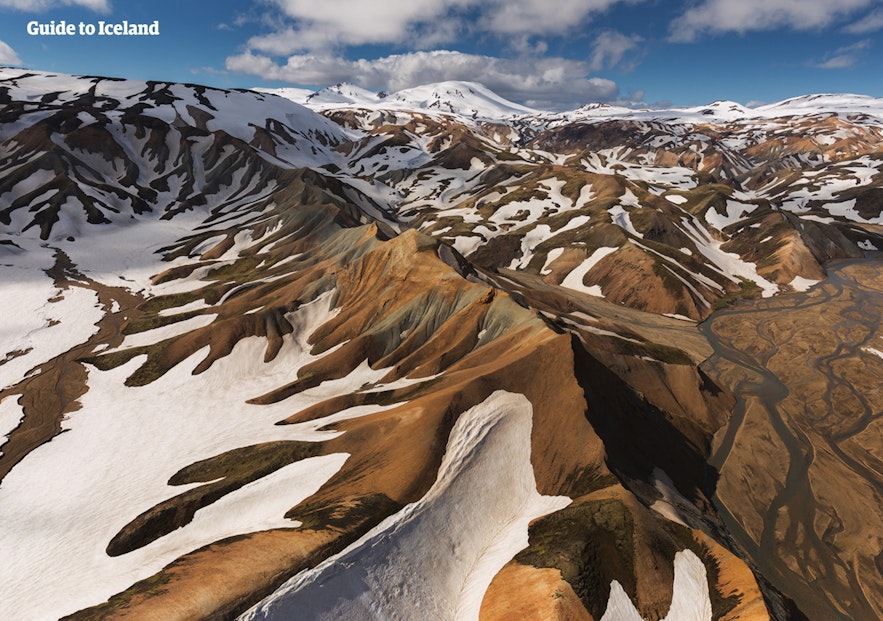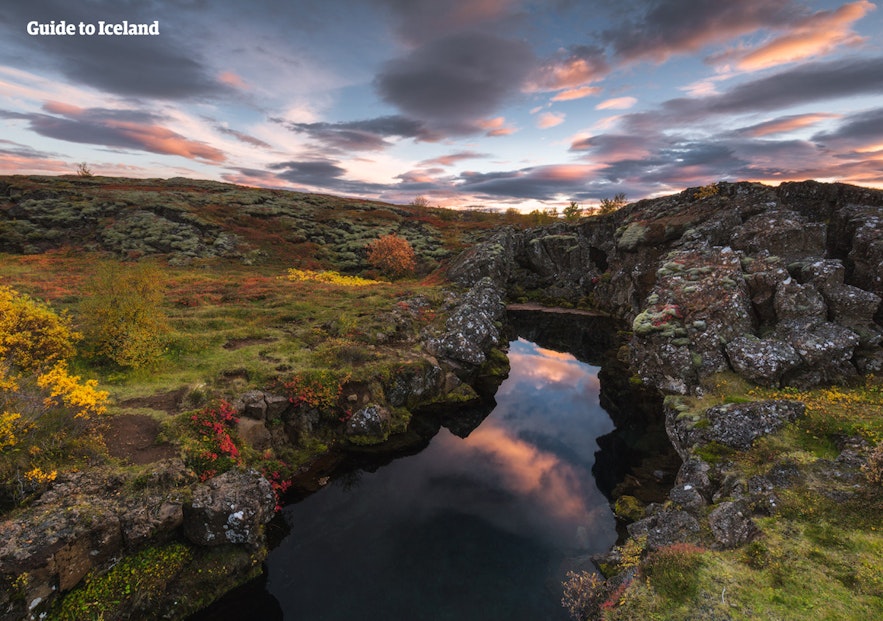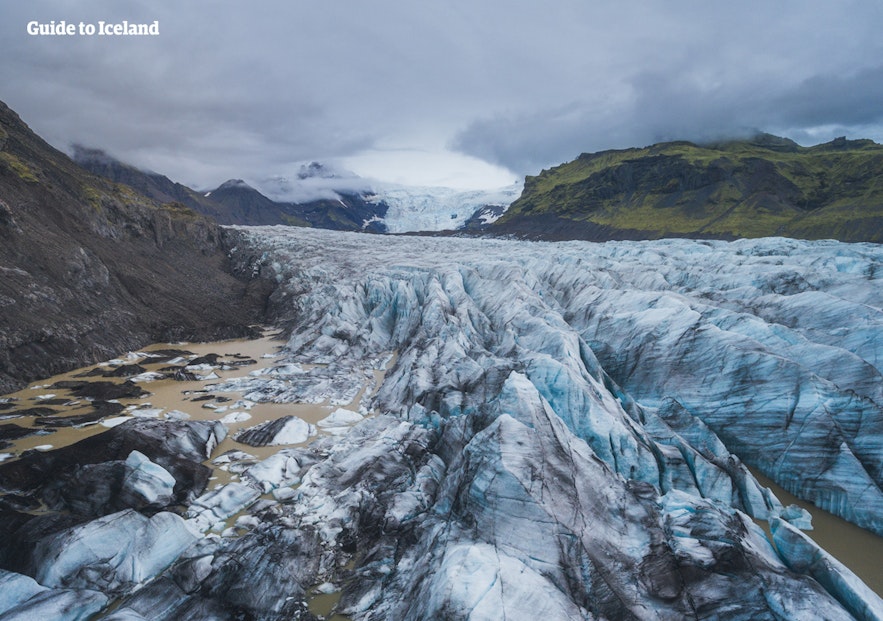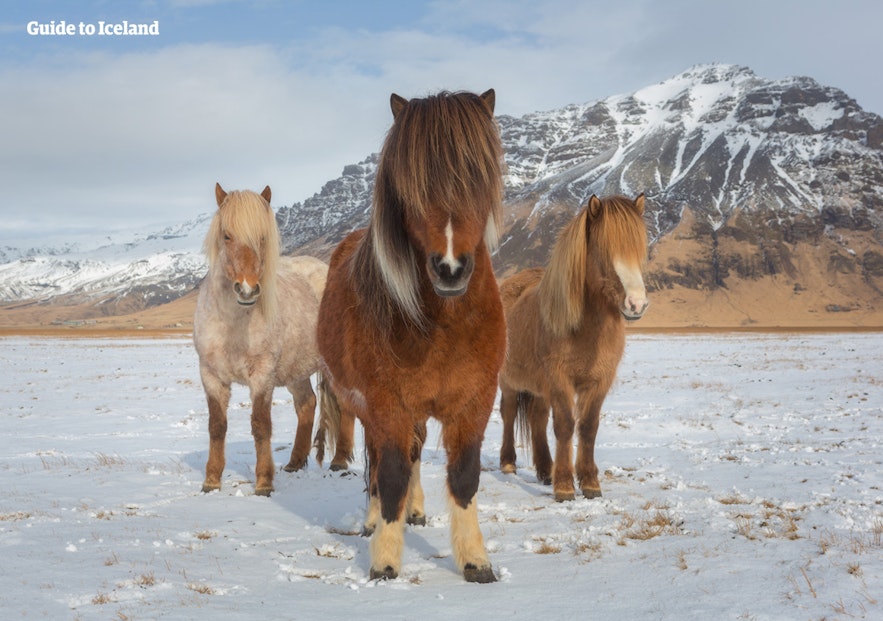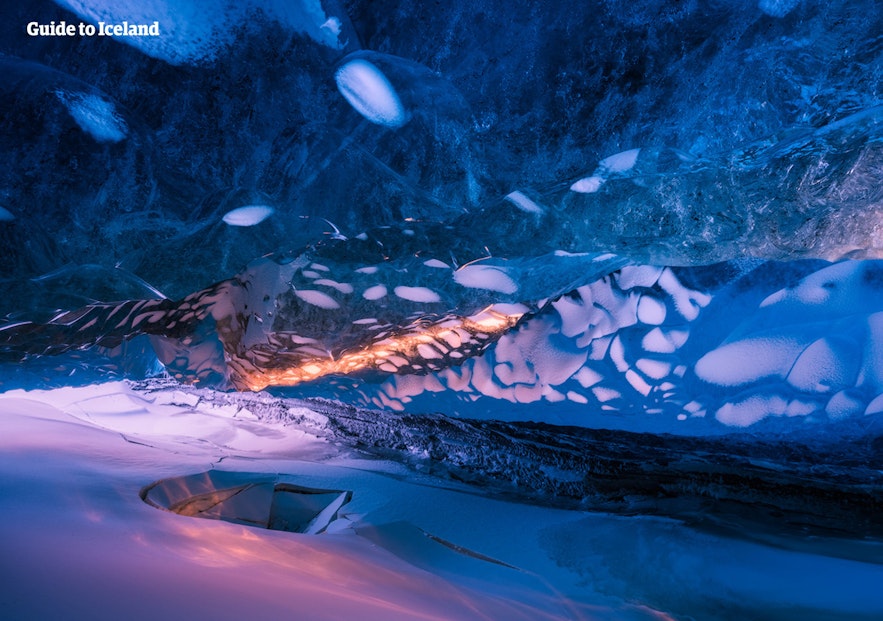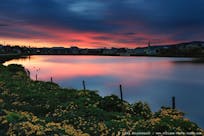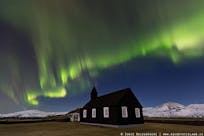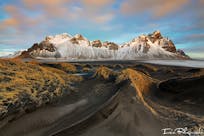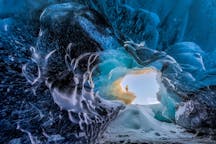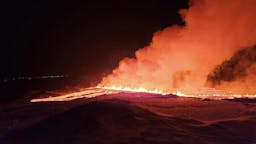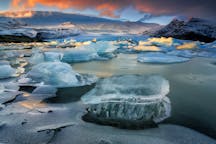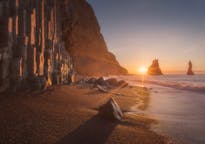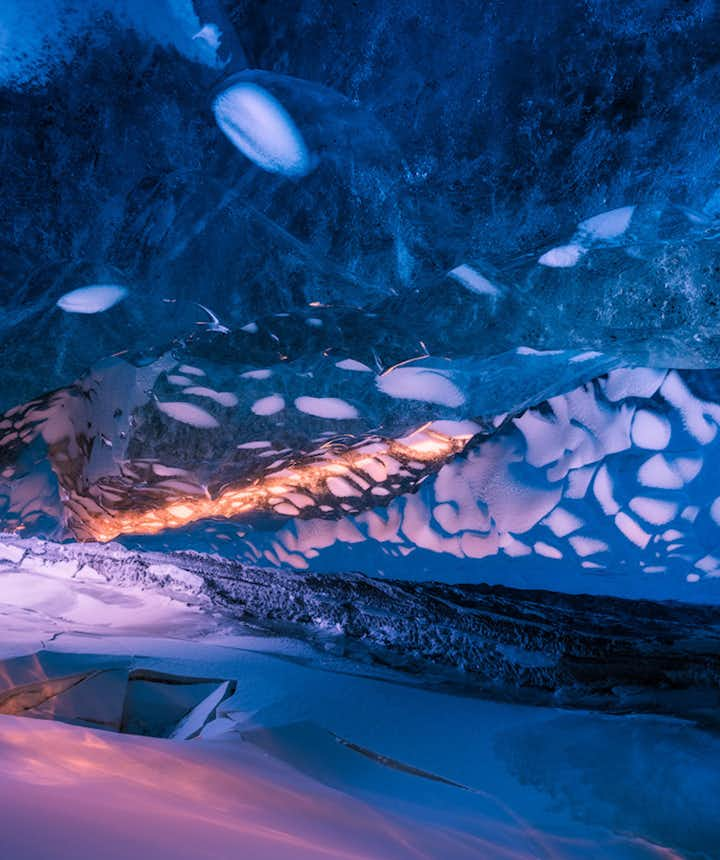
Top 9 Adventures in Iceland
What are the Top 9 Adventures to be had in Iceland? Which activities are available all year round, and how does one choose from all that’s on offer? Read on to find out all there is to know about the Top 9 Iceland adventures!
If there is one facet of tourism often overlooked by those employed in the industry, it is the motivations of those seeking to travel overseas. Many individuals consider a holiday abroad as a respite from the mundanity and struggles of daily life.
Deadset on an uninterrupted period of relaxation, these people are often found within a short distance from their hotel, perhaps lounging by the pool or enjoying a soft lunch in the city centre, doing little more than revelling in an environment that is different to that which they are accustomed.
On the contrary, others travel to deliberately broaden their horizons, be it through experiencing other cultures, partaking in new activities or educating themselves in what makes countries, including their own, distinct from one another. The American humorist, Mark Twain, once wrote,
“Twenty years from now you will be more disappointed by the things that you didn’t do than by the ones you did do. So throw off the bowlines. Sail away from the safe harbour. Catch the trade winds in your sails. Explore. Dream. Discover.”
Twain would have enjoyed Iceland, had he the opportunity to visit during his lifetime; the country seemingly draws upon his audacious wisdom, teasing travellers with activities and attractions quite unlike anything else found on the planet.
After all, where else but Iceland can, in one day, travellers enter the bronzing caldera of a dormant volcano, then spend two-hours hiking the creeping ice sheets of a crystal-blue glacier?
- See also: 13 Reasons to Visit Iceland.
Iceland is a country packed to the brim with adventures, be it exploring the central highlands, venturing deep into an ice cave or scuba diving between the continents.
Daredevils the world over will find more than can suffice here, but, in light of time and expense, we have compiled a list of the Top 9 adventures available in the hope that we may ease the decision-making process and leave you to enjoy your dauntless escapades.
9. Hiking the Central Highlands
Landmannalaugar (600 m above sea level) is widely considered to be Iceland’s premiere hiking paradise, sporting countless trails through a kaleidoscopic landscape of green, red and yellowing hillsides, trickling glacial rivers and steaming geothermal pools. Situated in the Fjallabak Nature Reserve in the Icelandic Highlands, Landmannalaugar sits just on the edge of the Laugahraun lava field, formed following a volcanic eruption around 1477.
- See also: What to Do & Where to Go
Landmannalaugar’s unique palette derives from rhyolite, a lava rock packed with minerals that cools particularly slowly, thus creating a gorgeous, psychedelic mixture of colour. This jazzy, rainbow-like ambience is, perhaps, the region’s main calling card, forever leaving an impression on those travellers who pass by here. Over recent years, Landmannalaugar has become a favourite for local and overseas visitors alike, providing a hiking experience unmatched elsewhere on the island.
Landmannalaugar is the starting point (or, alternatively, the northern end) of the famous Laugavegur hiking trail—don’t be confused; this is a very different Laugavegur to Reykjavík’s main thoroughfare. The trail, covering an astonishing 55 km (34 mi), leads from the Landmannalaugar geothermal springs toward the stunning valley of Þórsmörk and will take roughly 3-4 days for most hikers.
Thankfully, there are six mountain huts in which travellers can grab some much-needed rest, (Landmannalaugar, Hrafntinnusker, Álftavatn, Hvanngil, Emstrur and Skagfjörðsskáli in Þórsmörk) all of which are operated by the Icelandic Touring Association. All in all, these huts can accommodate between 12 to 75 people in sleeping bags, and provide utilities such as running water and cooking utensils, public showers and bathrooms.
Be aware that access to the Central Highlands is cut off during the winter months. Prospective hikers will have to wait until late June (with a little leeway, depending on the weather) if they hope to experience the wild and quintessential beauty of Landmannalaugar. The area stays accessible until the end of August or mid September, again, depending on weather.
To try to access the highlands during winter is—and let’s be clear about this here—neither brave, nor adventurous, but instead, unforgivably dimwitted, putting in danger not only your life but the lives of those duty-bound to rescue you. Remember, regulations are in place not to dampen the party, but to provide an assurance of safety for the many thousands of travellers visiting Iceland each year.
- See also: Search and Rescue Teams in Iceland
8. Snorkelling & Scuba Diving in Silfra Fissure
Þingvellir (“Fields of Parliament”) is Iceland’s largest National Park and one of the main stop-offs of the popular Golden Circle sightseeing tour (alongside Gullfoss waterfall and the nearby Geysir geothermal area. Þingvellir National Park can be found roughly forty-five minutes drive east of Iceland’s capital, Reykjavík, and is the only location in the country granted as a UNESCO World Heritage Site.
- See also: National Parks in Iceland
The reasons for this are multifaceted; firstly, Þingvellir’s geology is particularly fascinating, sitting between the exposed North American and Eurasian tectonic plates. Sat atop the Mid-Atlantic Ridge, the park is, continentally speaking, “no man's land”’, a dried magma field of subterranean cave networks and luminous green moss.
Second of all, Þingvellir is the site where the world’s first democratically elected parliament, the Althingi, was formed in the year 930 AD. Using the North American tectonic plate as a makeshift sounding board, the country’s designated lawspeaker would address crowds of thousands, all of whom had travelled for weeks by horse or foot to hear the latest news, justice and legislation.

Photo from 3 in 1 Bundled Discount Activity Tours with Volcano Exploration, Snorkeling & Glacier Hiking
But… we’re seeking adventure, and as luck would have it, Þingvellir is positively brimming with it. Aside from the hiking trails and scenic panoramas, the park’s biggest attraction is undoubtedly the glacial spring, Silfra Fissure, which leads into the adjacent lake, Þingvallavatn (“Lake of Parliament”).
- See also: Diving and Snorkelling in Iceland
Consistently voted as one of the Top 10 scuba diving and snorkelling sites worldwide, Silfra is famous for its crystal-clear visibility (often up to 100m), dramatic underwater geology and green “troll hair” algae, culminating in an aquamarine environment that defies the imagination.
It is the water’s visibility that is Silfra’s greatest attraction, having been filtered and cleansed over half a century’s journey from its origins at Langjökull Glacier. The water stays at between 2°C – 4°C the year-round, and is so clean that visitors are advised to drink from the fissure itself.
Thanks to a gently flowing current, the water at Silfra never freezes, meaning the option to snorkel or dive here is available the year round. This current also ensures that any debris that may be kicked up by the group in front of you will quickly dissipate, restoring the visibility almost instantly.
There are, however, certain cautionary caveats that must be noted here. First of all, there is a list of regulations and requirements that must be met for both snorkelling and scuba diving; you can find the full details at the bottom of the article Diving and Snorkelling in Iceland.
Also, be aware that both activities require you to wear a drysuit—diving requires previous experience in using one—and both tours involve a little bit of walking in heavy equipment; in that regard, one should be able to confidently meet the physical requirements before taking part.
7. Enter a Volcano
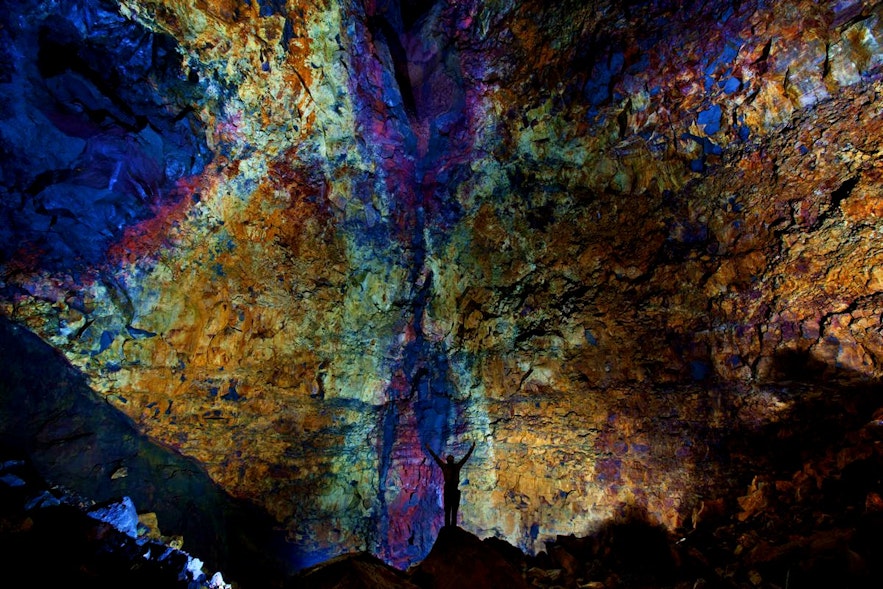
Fear not, this activity is far less terrifying than it sounds; in fact, entering the caldera of a dormant volcano is just about the-most-unique thing a person can do in Iceland, if not on the planet. For those looking for a truly authentic and unmatched Icelandic experience, look no further than toward the very centre of the earth.
- See also: Volcanoes in Iceland
The volcano in question is Þríhnúkagígur, found 20 km (13 miles) southeast of Reykjavík within the conservation area, Bláfjöll Country Park. The last volcanic eruption here is dated to over 4000 years ago, meaning that entering the volcano’s inner-chambers is completely and utterly safe.
The almost unpronounceable Þríhnúkagígur volcano literally translates to “Three Peaks Crater”, named by Icelandic doctor and cave enthusiast, Árni B. Stefánsson, who for years fought for the volcano to be made accessible. The name “Three Peaks Crater” is derived from the triangular hills that stand as a visual landmark for the capital.
Visitors to Thrihnukagigur will descend 120m into the volcano’s magma chamber. Unlike other volcanoes across the region, Þríhnúkagígur’s magma chamber is empty, and thus, something of a mystery to scientists and visitors alike.
One theory is that the magma simply solidified itself to the surrounding chamber, whilst another makes the claim that the lava simply retreated back towards the earth’s centre. As volcanologist Haraldur Sigurdsson explains, “Þríhnúkagígur is unique. It’s like somebody came and pulled the plug and all the magma ran down out of it!”
6. Ride an All-Terrain Vehicle (ATV)
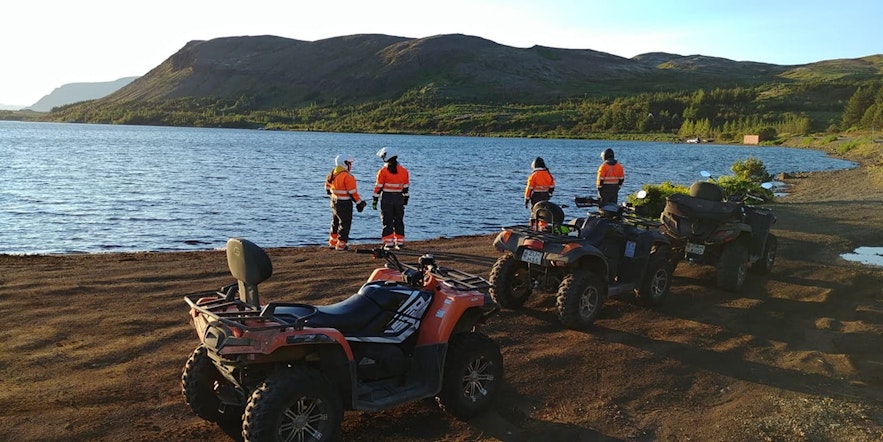 Photo from Easy 1 Hour ATV Tour of the Icelandic Countryside with Transfer from Reykjavik
Photo from Easy 1 Hour ATV Tour of the Icelandic Countryside with Transfer from Reykjavik
Off-road driving is strictly illegal in Iceland because of the fragility of the natural environment. Those caught breaking the law are issued with gargantuan fines of up to ISK 500,000 (USD 4,350, EUR 3,225). Given that Iceland is already an expensive place to both visit and exist in, fines such as these can be the dividing line between a perfect vacation and a holiday from hell.
There is, however, one vehicle exempt from that law (within designated areas, of course), the ATV; an All-Terrain Vehicle. Otherwise known as a quad or quad bike, these vehicles are specifically designed to be able to cope with the rough, rugged terrain that so sweeps across Iceland. Depending on the operator, there are a number of different types of ATV's available, ranging from the regular quad bike to buggies.
By taking an ATV tour, visitors will have the chance to experience the Icelandic countryside like never before. Mountain valleys, trickling rivers, volcanic plateaus, black sand beaches; all are there and waiting for those adventurous enough to explore them.
Deep within the wilderness, All Terrain Vehicles offer their driver a new perspective on the landscape, all the while providing an addictive, adrenaline-fuelled experience that’s difficult to come by elsewhere. Aside from snowmobiling or, perhaps, downhill skiing, driving an ATV is the optimum experience for thrill-seeking speed junkies everywhere.
For safety reasons, guests will be provided with a crash helmet and overalls, ensuring the rider feels as secure as possible. Fear not if you have never ridden a quad bike; the ATV tour is one of the more popular activities available from the capital and most of those partaking are first-time riders.
Your instructors will make sure that you feel confident in how to operate the machine before letting you loose, and will always a keep close watch as they follow from behind.
5. Go White Water Rafting
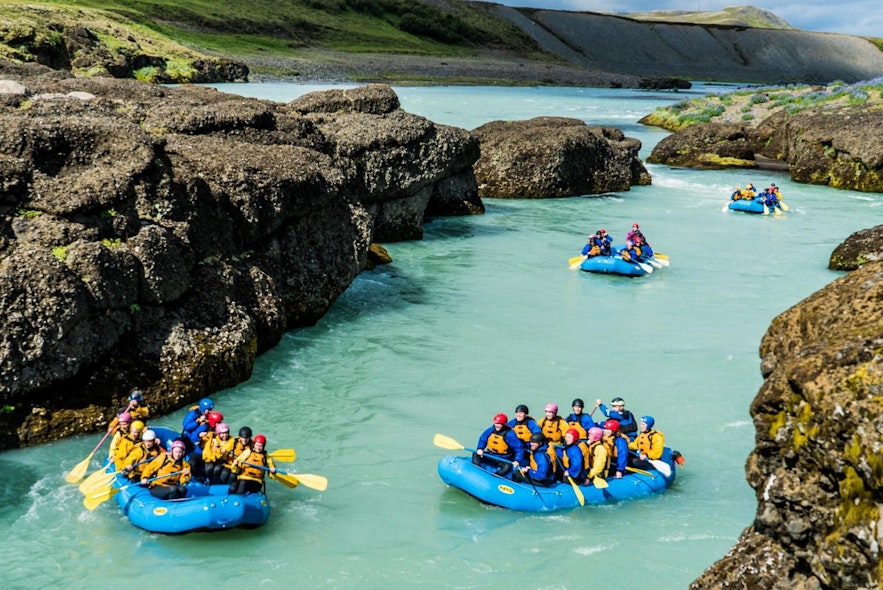 Photo from Unforgettable 7 Hour River Rafting Trip of Gullfoss Canyon with Transfer from Reykjavik
Photo from Unforgettable 7 Hour River Rafting Trip of Gullfoss Canyon with Transfer from Reykjavik
Iceland is not renowned for its white water rafting, despite the fact that the country boasts some of the most beautiful—and, let’s not avoid saying 'turbulent'—rivers in the world. Don’t get me wrong, the rivers here lack the drama of their international counterparts, but still prove to be a fun and challenging experience that, thankfully, is available to the whole family.
The majority of Iceland’s rivers are glacial, meaning that the water’s origins lie at one of the country’s prodigious icecaps. The Hvítá River, for instance, is comprised of the exact same water as the frozen and cragged crevasses of Langjökull glacier. In this sense, river rafting is, perhaps, the last method for exploring Iceland’s glaciers to completion. This is, after all, a land defined by its water.
Whitewater River Rafting began in Iceland in the 1980s, introduced by the married couple, Klara Jónsdóttir and Sigurður Friðriksson, after experiencing the venturesome delights of rafting in Nepal. After returning to Iceland, the pair set about finding the perfect river in which to set up their base.
Aided by experienced Nepalese and New Zealander rafting guides, “the boat people”—as they were referred to by the media—finally settled upon the glacial river Hvítá.
In 1987, Bakkaflöt, the country’s first rafting operator, opened its doors to an eagerly awaiting public. Ever since, the sport has gone from strength to strength, with rafting tours now available on both the Austari-Jökulsá River (“The Beast of the East”) and the Jökulsá á Fjöllum.
4. Whale Watching
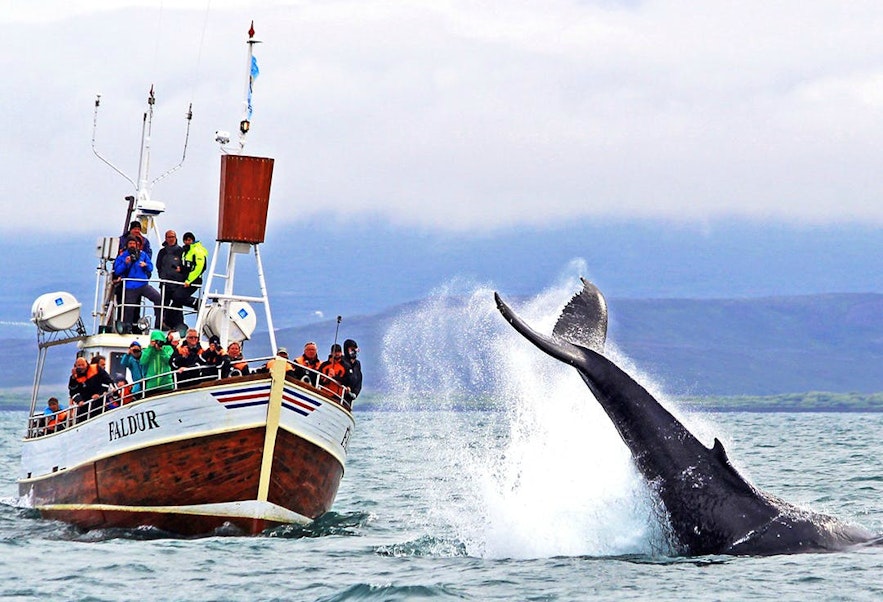
For people the world over, the high seas have forever promised adventure; with its ferocious and unpredictable weather, omnipresent horizon and unfathomable depths, departing from Iceland’s mainland has never been more exciting, nor more pleasurable, especially considering the fact that the majority of boat trips here revolve around the country’s youthful whale watching industry.
Whale species that live in the waters around Iceland include Humpback Whales, Sperm Whales, Minke Whales, Fin Whales and even the mighty Blue Whale, though its appearance is less frequent. Among other cetacean species, visitors can observe Orcas (Killer Whales), White-Beaked Dolphin and Harbour Porpoise. All in all, there are over 20 different species of cetacean to be found, though the 8 aforementioned are the most likely bet during your three-hour ocean voyage.
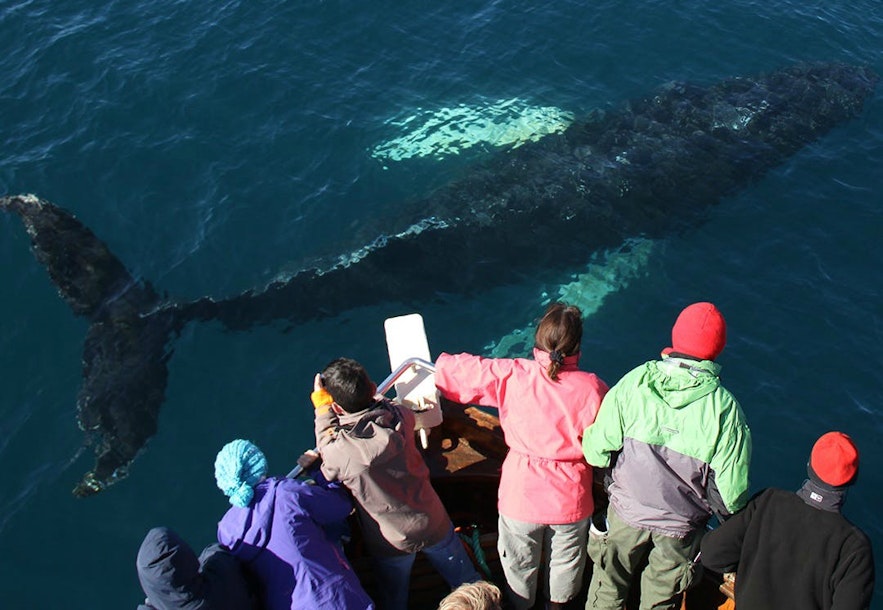
Tours can be undertaken from numerous locations around Iceland, including Reykjavík, Akureyri, Dalvík, and the country’s whale-watching capital, Húsavík. Húsavík is widely considered the best spot from which to go whale watching given the varying species that often enter the bay, in part due to the mineral-rich water and large populations of plankton, the primary food source for Baleen Whales.
Down by the village harbour, visitors can also experience the Húsavík Whale Museum where they can learn more about the habitat and ecology of Iceland’s cetacean species, as well as look at numerous exhibits that detail the history of the village's whale-watching industry.
3. Conquer the Glaciers
Glaciers cover 11% of Iceland's total landmass (11,400 km² out of 103,125 km²); their impact on the country spans geographical, cultural and economic boundaries, and thus, are an integral part of what makes Iceland the country it is.
- See also: Glaciers and Glacier Hiking in Iceland.
Iceland's largest glacier is Vatnajökull (8,300 km²), found in a national park of the same name, in the southwest of the country. With numerous outlet glaciers, peaks, ice caves and adjacent lagoons, Vatnajökull is one of Iceland's most important glaciers, forever feeding the economy with eager visitors hoping to see such a glittering spectacle with their own eyes.
Other glaciers worthy of a visit are Langjökull (Iceland's second-largest ice cap) and the mystic energy centre, Snæfellsjökull, visible from Reykjavík's coastline on clear days. All in all, there are over 13 large glaciers you could choose to visit on your trip to Iceland.
Glacier hiking is a risky activity and should never, under any circumstances, be undertaken without the leadership and supervision of a qualified glacier guide. The reasons for this are numerous, least of which is the unstable terrain and hidden crevasses.
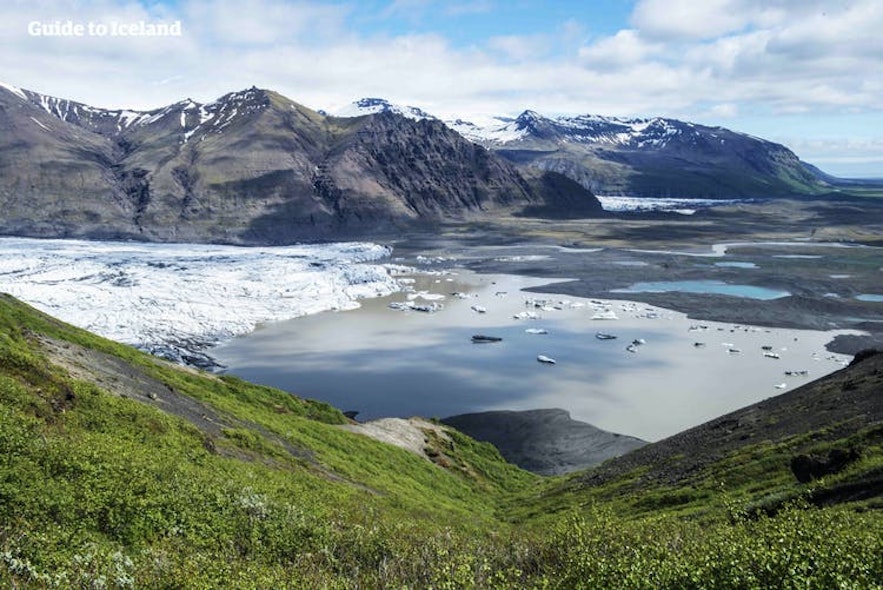
Operators who run tours to the glacier will be sure to provide you with all of the equipment necessary, including helmets, crampons, snow-shoes (if necessary) and hiking poles. They will also teach you a wealth of information about the surrounding landscape and the glacier itself, bringing in an element of education to your trip.
Of course, given the current danger of climate change, Iceland's glaciers are under threat, receding every year as the temperature warms. One very notable way of effectively seeing this change is to visit the "Crown Jewel of Iceland", Jökulsárlón Glacier Lagoon. Known for its radiant and tranquil beauty, drifting icebergs and playful seals, Jökulsárlón has increased in size each year as Breiðamerkurjökull (its adjacent outlet glacier) continues to melt away.
2. Horseback Riding
The Icelandic horse is notably smaller in demeanour than other breeds, with a muscular body, thick coat and relatively petite legs. As strong, adaptable and hardy as the Icelandic people themselves, this breed has, for centuries, managed to withstand the cruel winter temperatures, developing into a reliable and sturdy companion for the island’s population.
Internationally, Icelandic horses are best known, perhaps, for their ability to perform five distinctive gaits. However, there are strict export regulations in place to protect the breed; any Icelandic horse that leaves the country can never return.
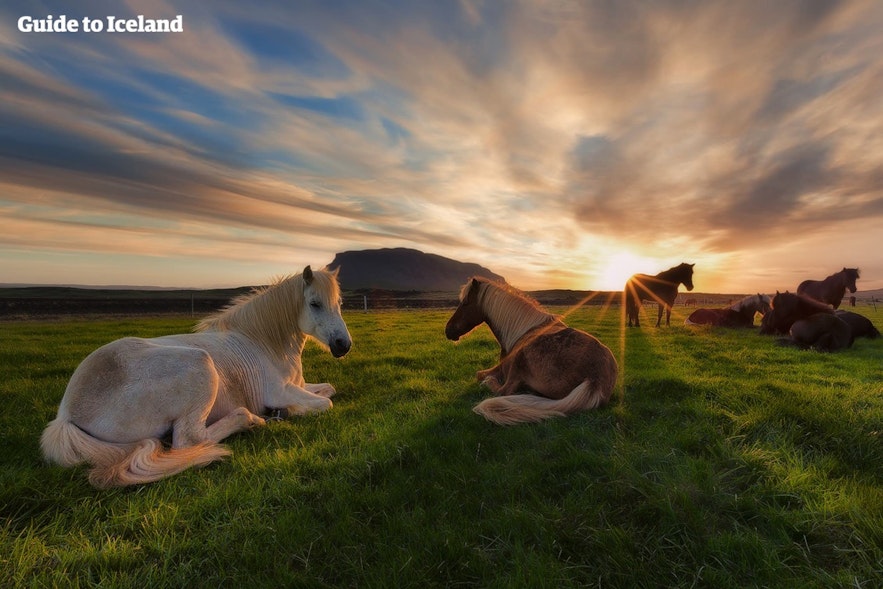
Horseback riding is one of the most popular activities available in Iceland as it gives visitors the opportunity to both meet these noteworthy steeds and to witness the Icelandic countryside from an entirely new perspective.
First-time riders need not worry; your qualified guide will quickly show you the basic facets of horse riding (e.g. working the reigns, directing the horse, etc.) You will be provided with all the equipment you need (e.g. helmets, stirrups, etc.), and taken out to the stables where you will be allocated your very own prized steed.
1. Ice Cave Exploration at Vatnajokull Glacier
Taking our number one spot on our list is ice caving at the amazing Vatnajökull Glacier. Going ice caving not only gives you a deeper and fascinating insight into the glacial innards of one of Iceland's icecaps, it also provides one of the most adventurous and authentically unique experiences available in the country.
Iceland's ice caves are the pinnacle for nature lovers and photography enthusiasts alike; as one ventures deeper and deeper under the ice cap, they are soon privy to a subterranean world of frozen sculptures and glassy ice sheets.
For those looking to experience an ice cave, we would recommend that you partake in a multi-day tour. By stretching the experience over a number of days, you will have the opportunity to see far more attractions along the south coast, such as the beautiful waterfalls, Seljalandsfoss and Skógafoss, the black sand beach, Reynisfjara, Skaftafell Nature Reserve and Jökulsárlón Glacial Lagoon.
Of particular interest are the 2 Day Ice Cave Tour | South Coast Waterfalls & Jokulsarlon Glacier Lagoon and the 3 Day South Coast Northern Lights, Jokulsarlon Ice Cave, Golden Circle & Glacier Hiking.
At the end of every summer season, caving operators, explorers and scientists all set out towards the glaciers in hope of finding new ice caves from which they can run tours. Given the immense popularity of ice caving in Iceland and the fact that they soon disappear as the temperature increases, it is always recommended to book your place as early as possible. These tours are only available from mid-October or November, depending on the operator, until March.
And so, to conclude our Top 9 Adventures in Iceland, we leave you, once again, with the words of Mark Twain:
“Travel is fatal to prejudice, bigotry, and narrow-mindedness, and many of our people need it sorely on these accounts. Broad, wholesome, charitable views of men and things cannot be acquired by vegetating in one little corner of the earth all one's lifetime.”
Did you enjoy our article on the Top 9 Adventures available in Iceland? What was your favourite adventure during your stay, and what are you looking to do on your next visit?
Other interesting articles

Top 10 Car Rental Companies in Reykjavik
Renting a car in Reykjavik is a great way of getting around the capital and Iceland in general. Choosing the right car rental is important, so we've made a list of the best ones in the country. Re...Read more
Plants in Iceland | Flora Under the Arctic Circle
Which plants grow in Iceland? Are there Icelandic wildflowers, and if so, what are their names? Is it true that there no trees in Iceland? And are there any edible or medicinal plants that grow in...Read moreIceland as a Honeymoon Destination
What are the best honeymoon ideas and packages available in Iceland? What tour activities are best suited to newly-weds? What time of year can you experience the Northern Lights, or visit a magical...Read more

Download Iceland’s biggest travel marketplace to your phone to manage your entire trip in one place
Scan this QR code with your phone camera and press the link that appears to add Iceland’s biggest travel marketplace into your pocket. Enter your phone number or email address to receive an SMS or email with the download link.


